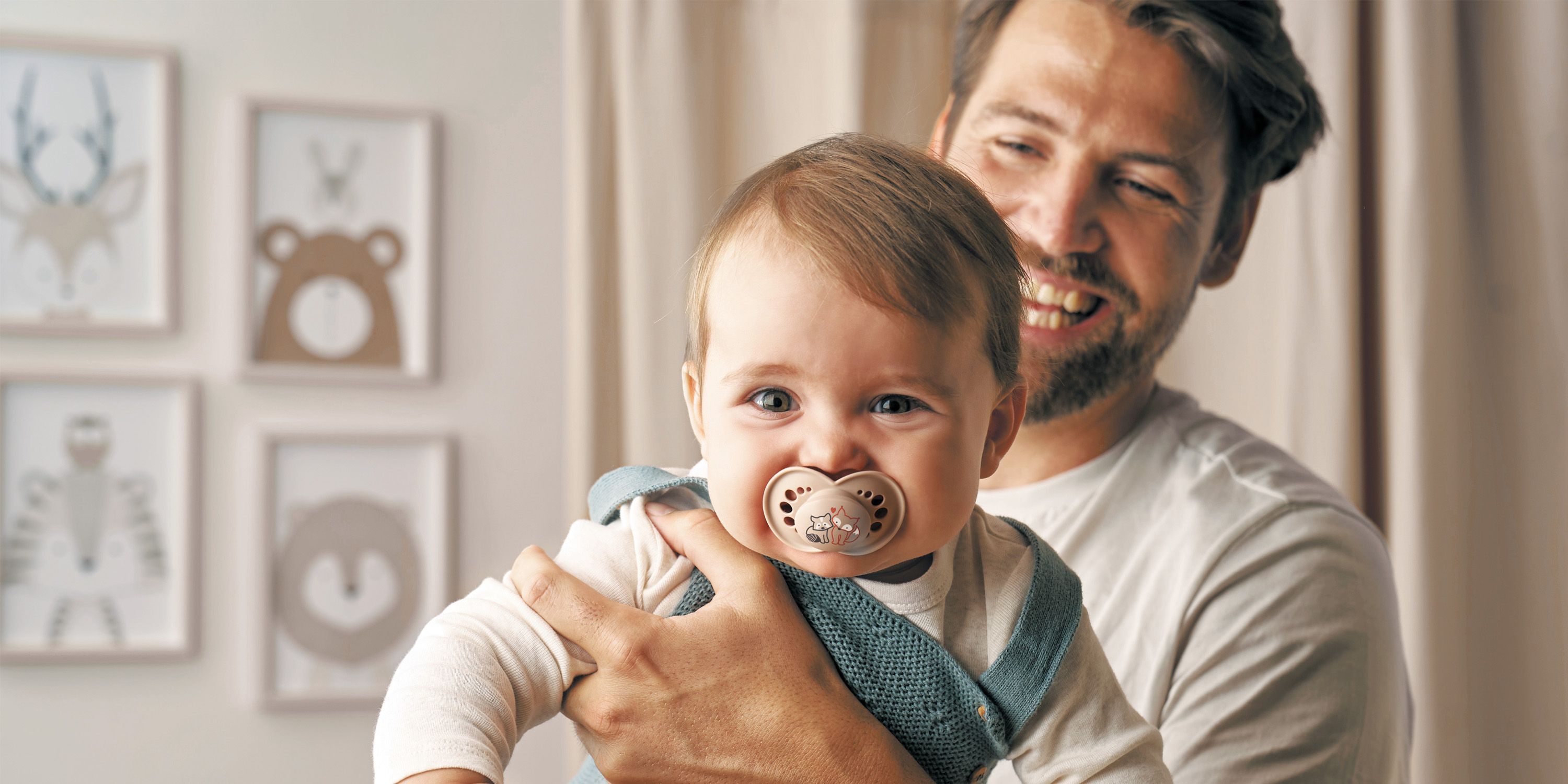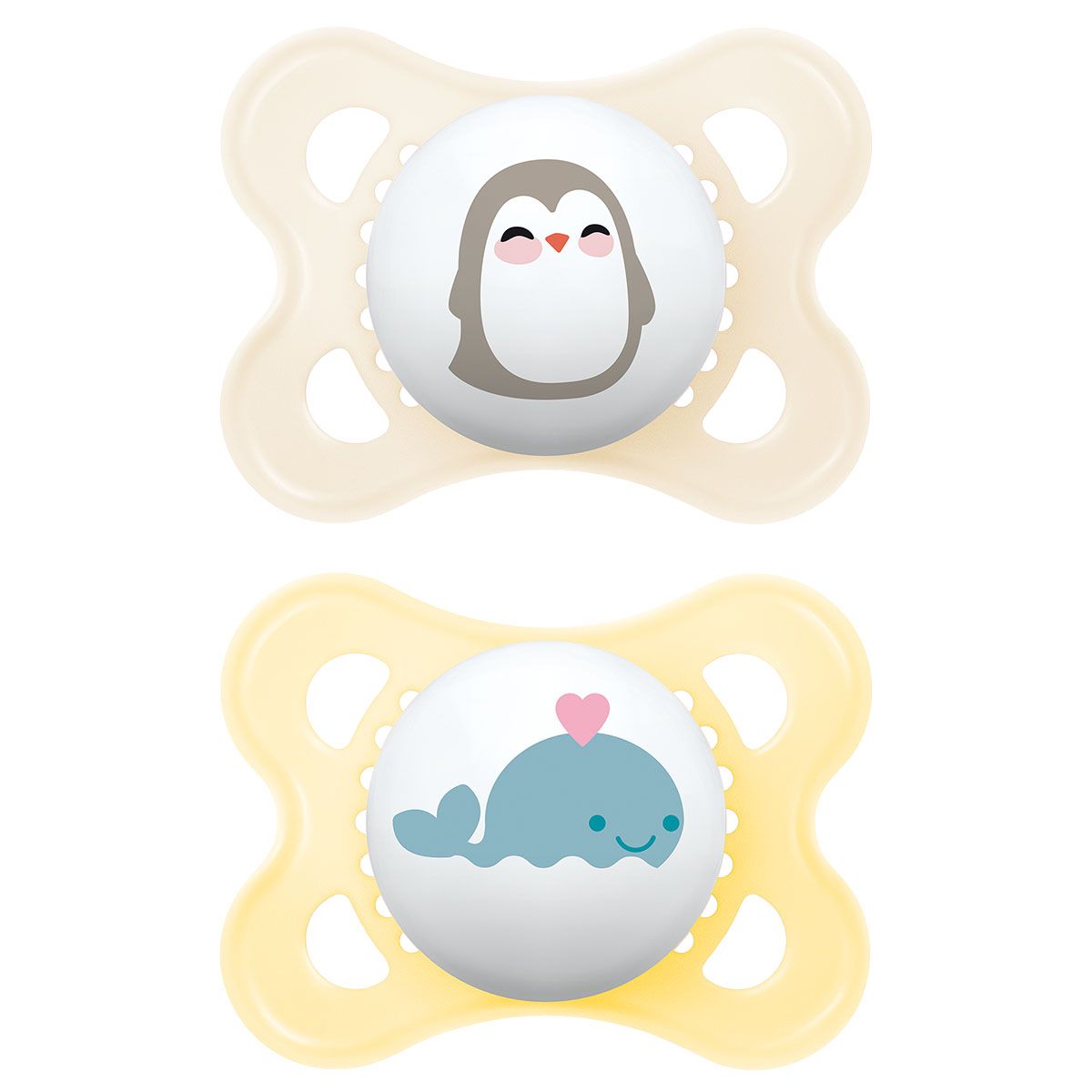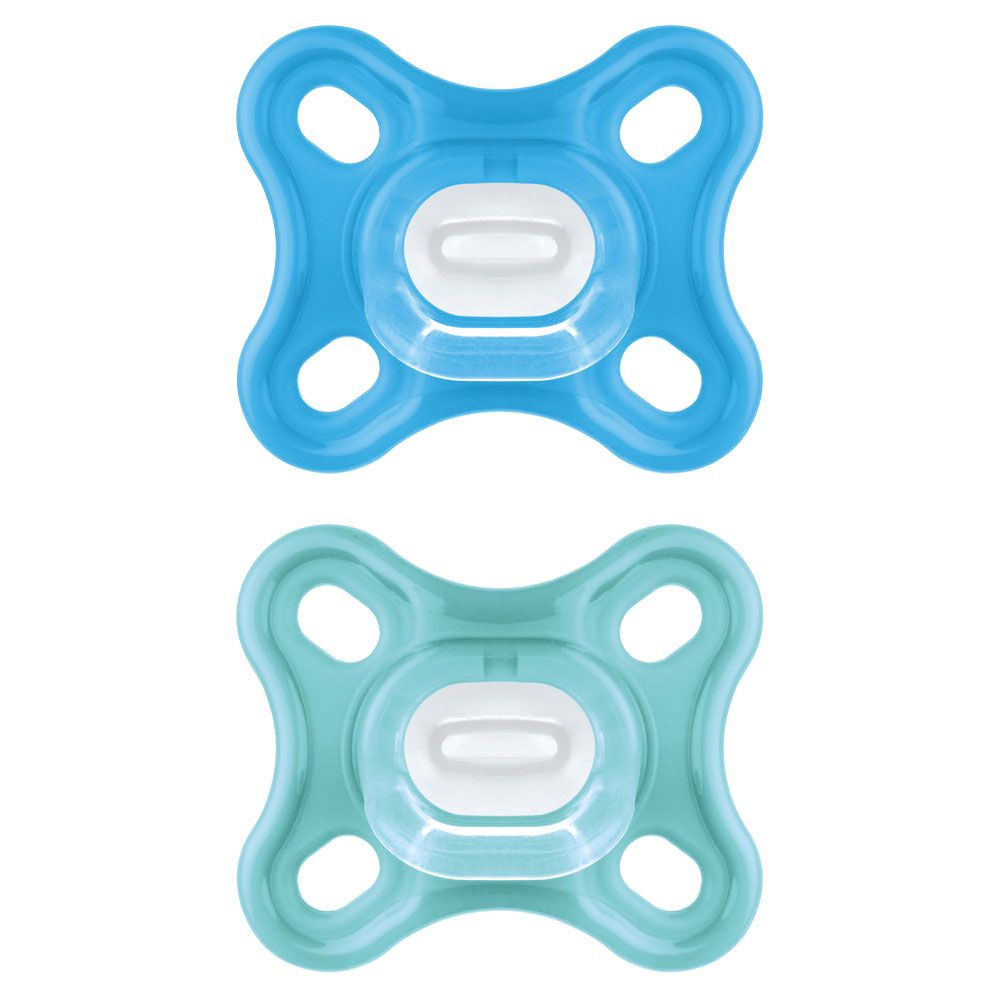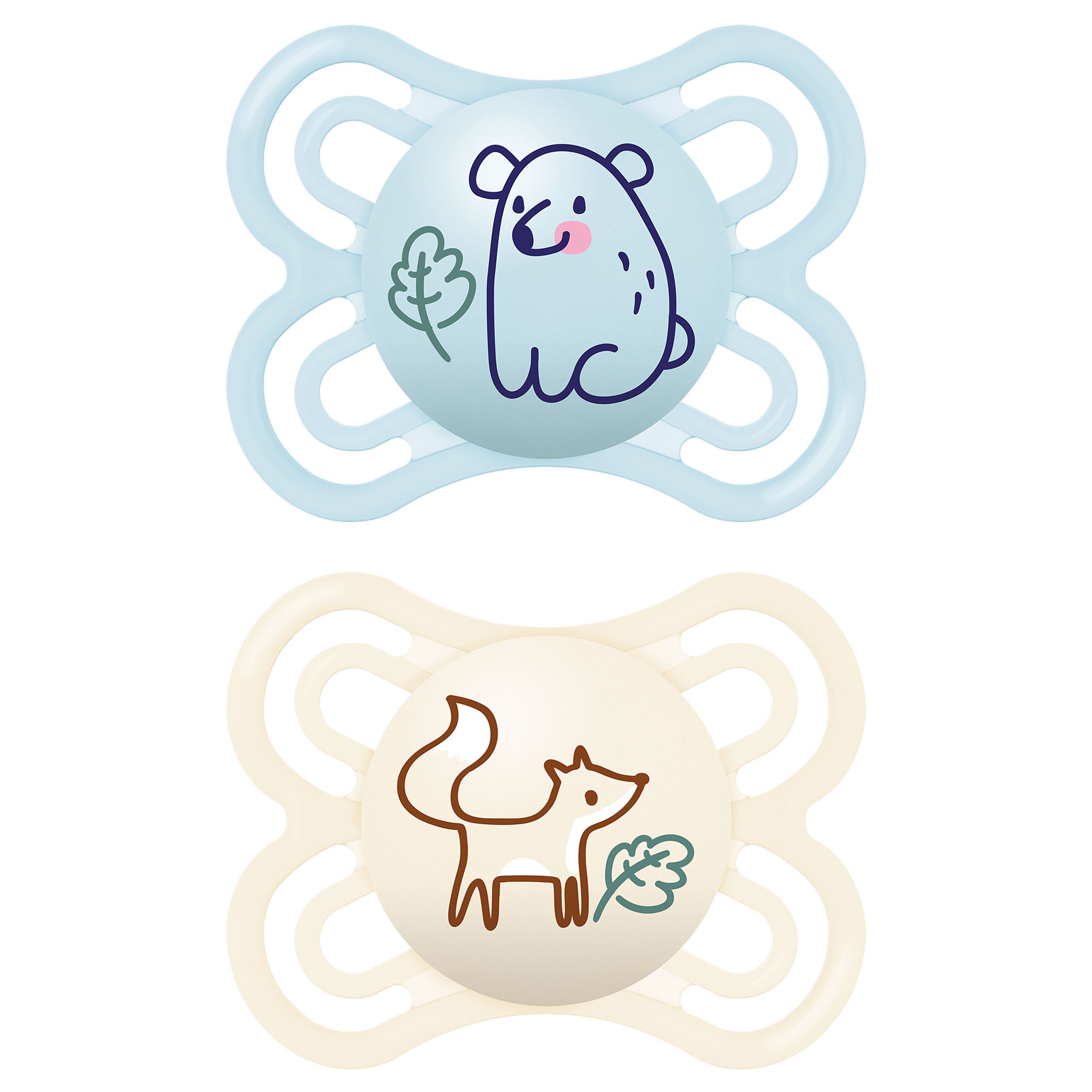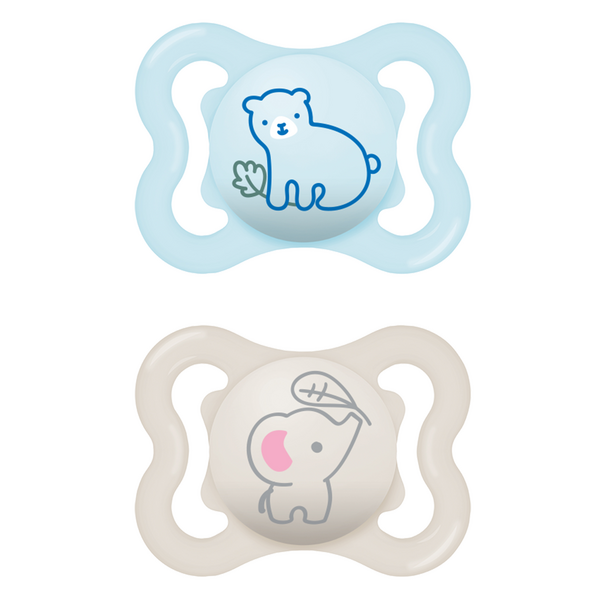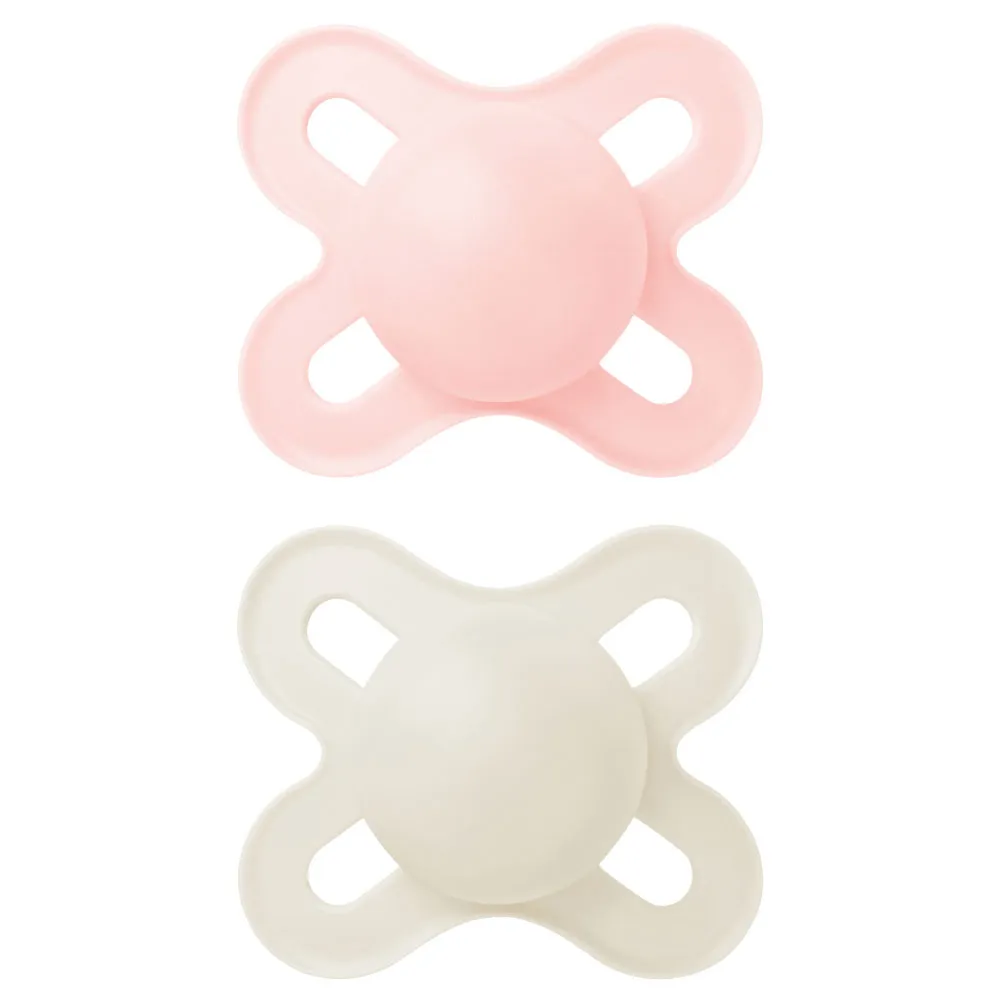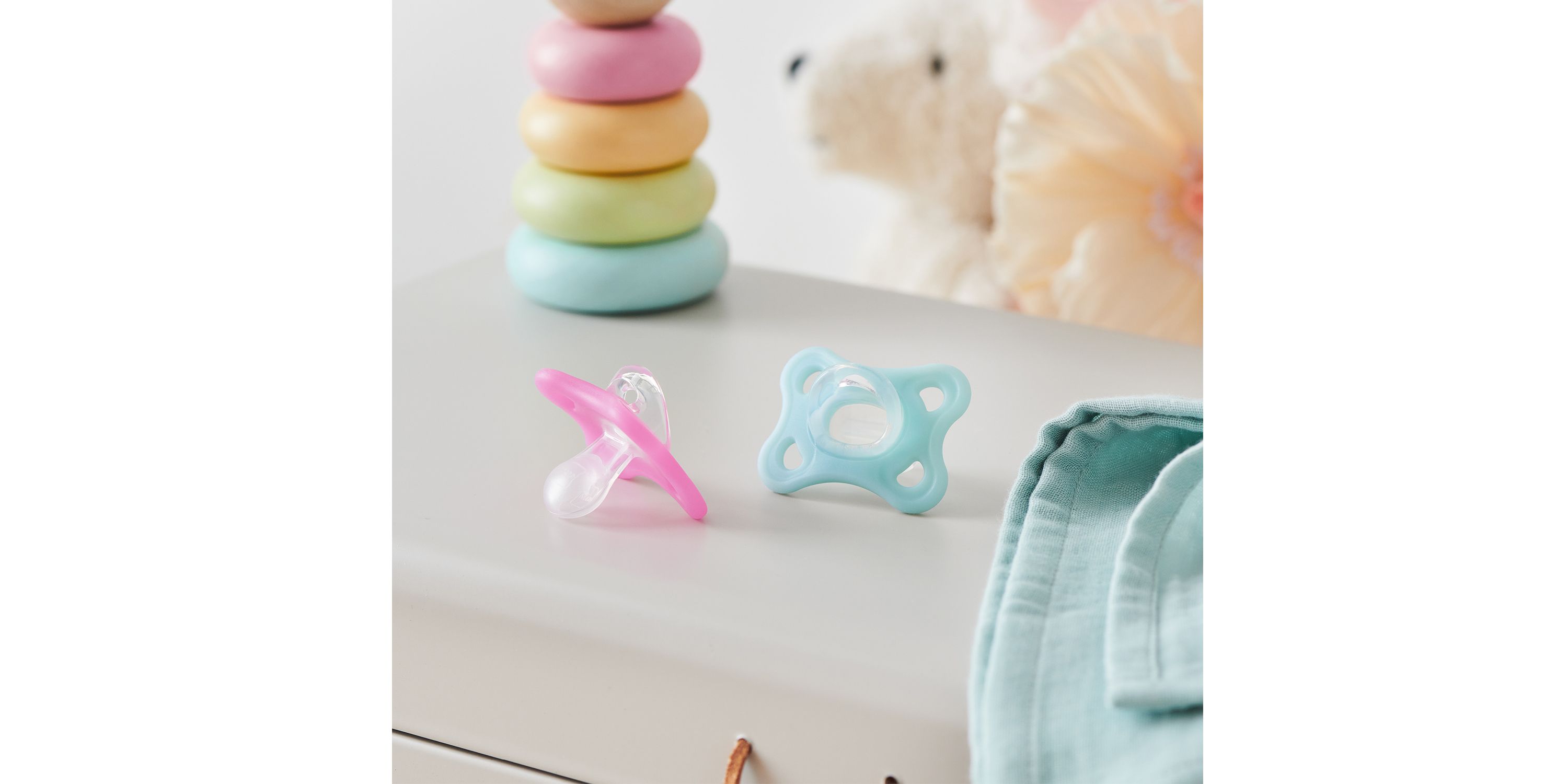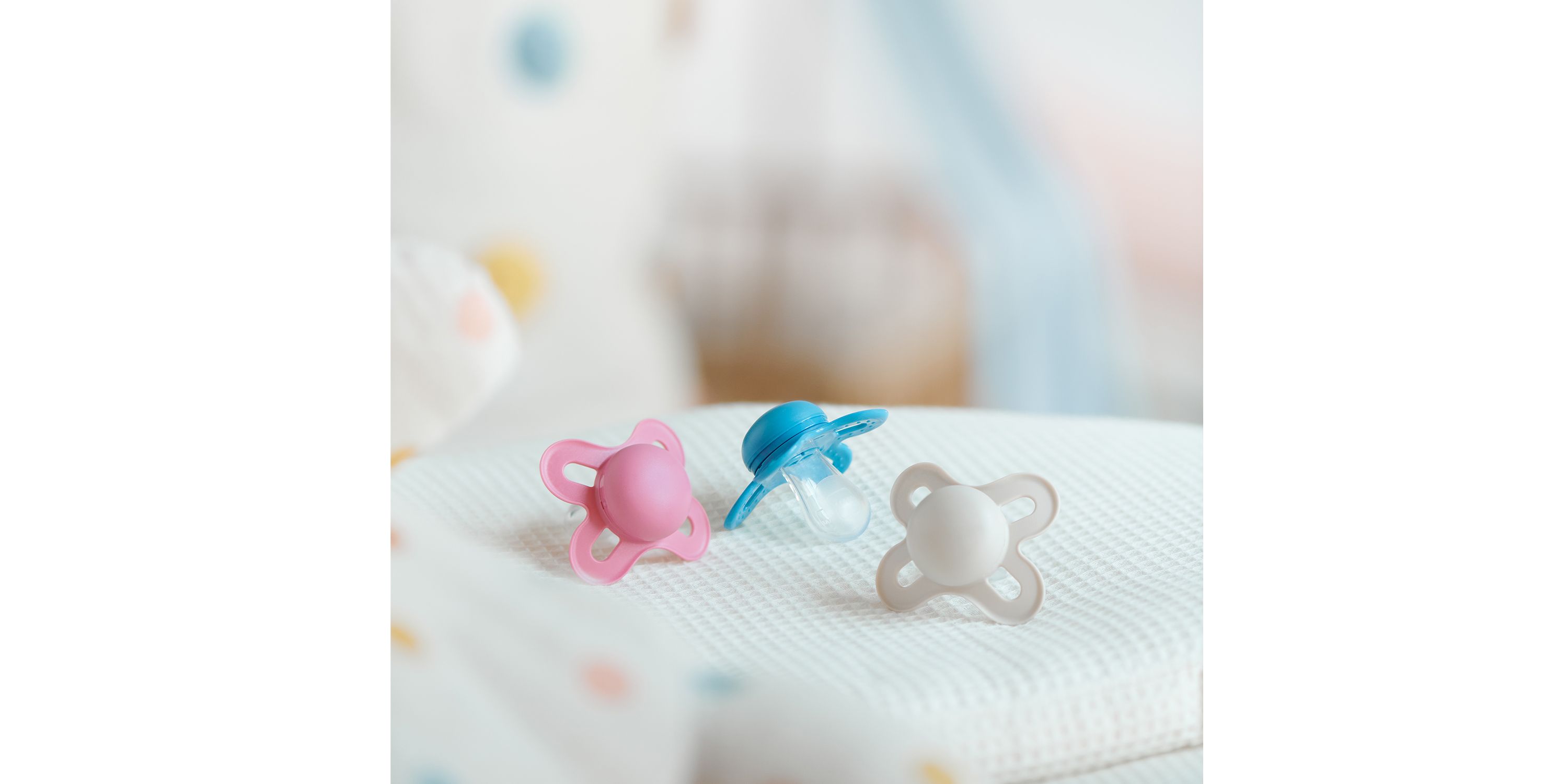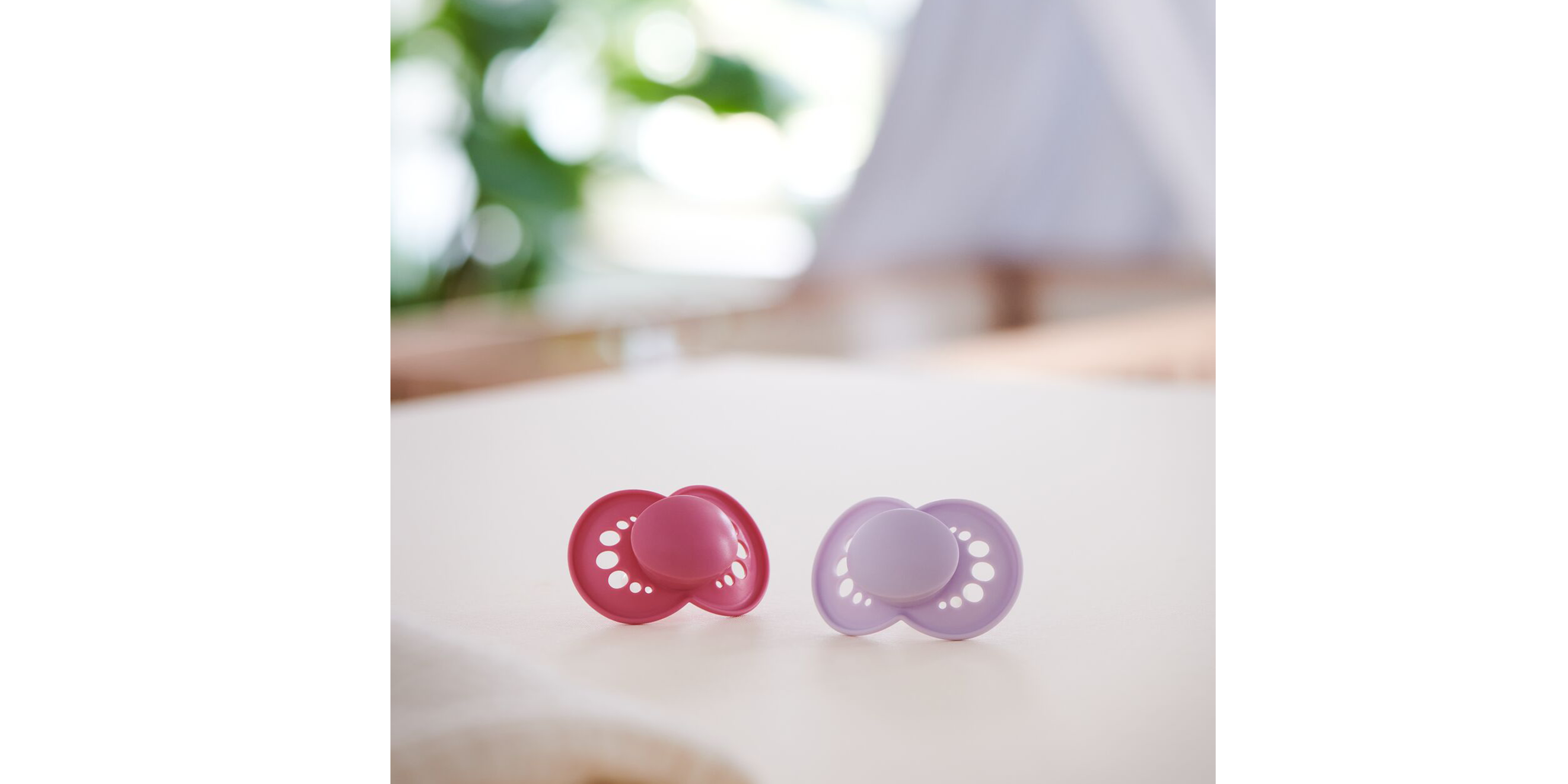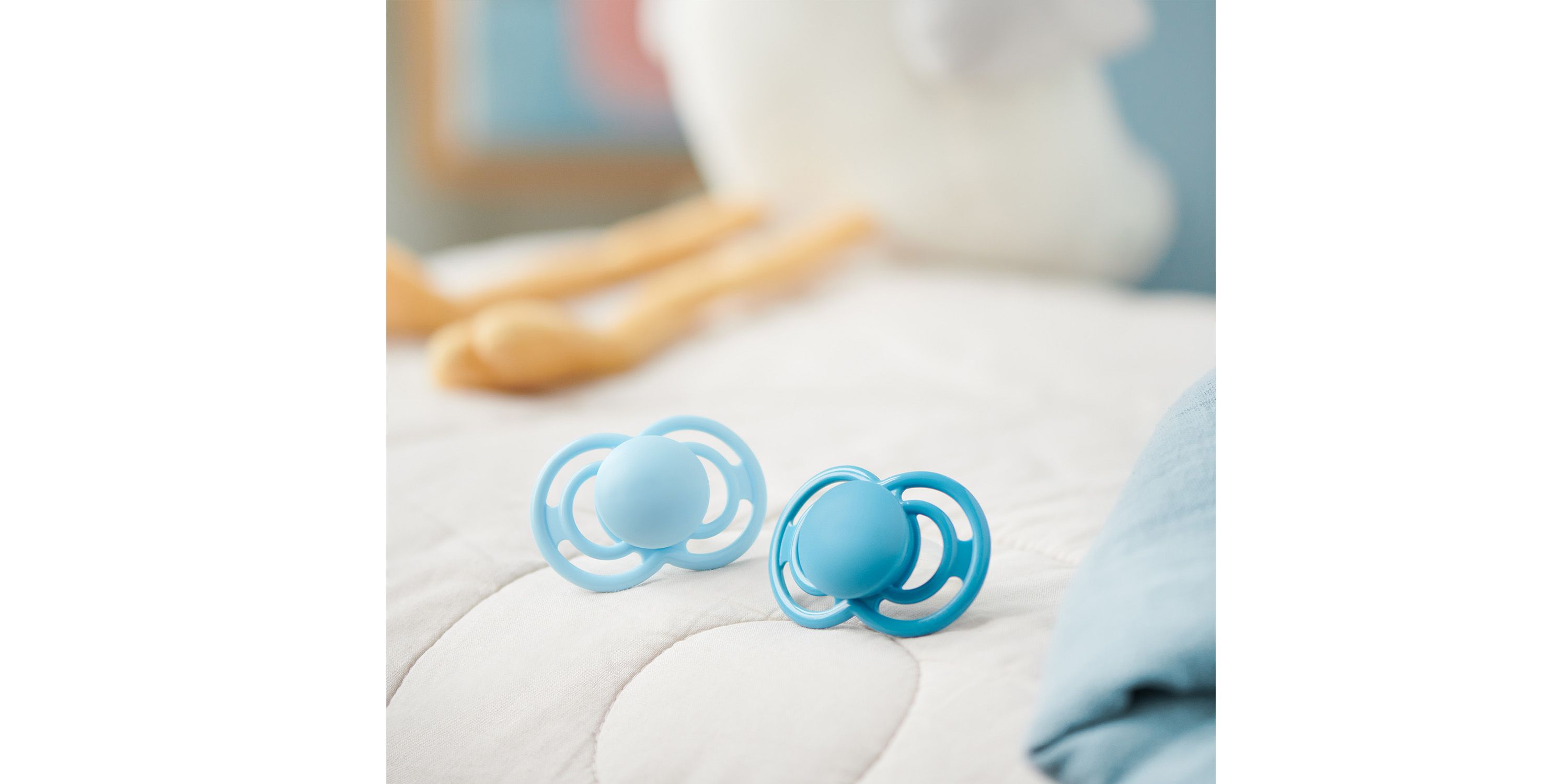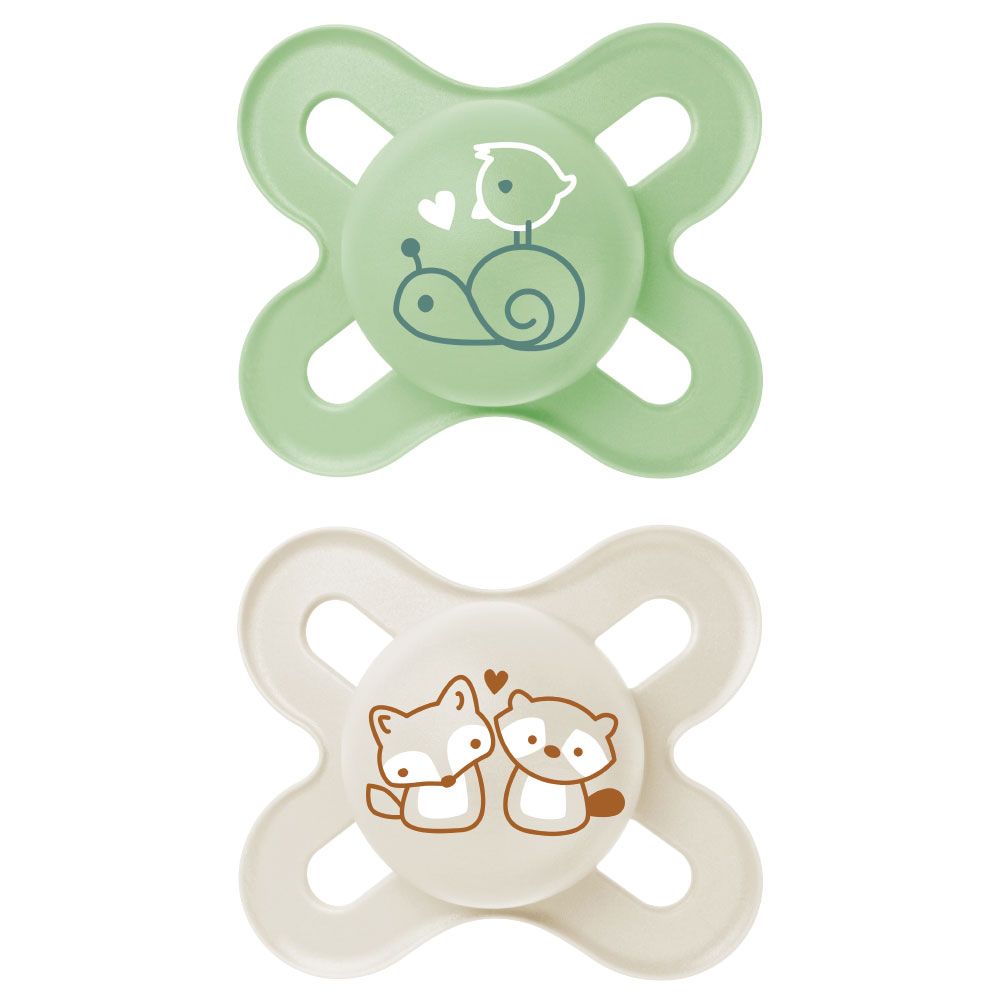Every baby experiences the natural urge for non-nutritive sucking—a need that begins even before they enter the world. During the initial year of life, this desire to suck is significant. Even when their hunger is statisfied, babies find comfort in sucking, finding it profoundly relaxing. Other than mom’s breast, only soothers support healthy oral development because they are anatomically correctly shaped and quality checked to ensure that the sucking becomes pure enjoyment!
MAM Soother Range
To ensure that we meet all babies´s and parents needs, MAM offers 5 different soother lines.
MAM Soother
At MAM, we share the opinion that a product that spends hours every day in a baby’s mouth must fulfill the highest quality requirements. That is why our soothers are developed with a team of professionals and are carefully tested.
- All MAM soother Shields are flat and provide a symmetrical shape. All MAM teats ensure that they always fit correctly in the baby’s mouth – no matter how many times they are turned around. In contrast to a cherry teat, our symmetrical MAM teats ensure a more natural mouth closure to reduce the risk of misaligned teeth.
- Fresh air for healthy skin – big air holes in the shield guarantee maximum air flow to avoid saliva accumulation and wetness next to the baby’s skin. This helps to prevent skin reddening and soreness.
- A clever curve – the curved shape of MAM soothers Shields is adapted to the baby’s face shape to ensure optimum comfort. It is flatter for smaller babies and has a stronger curve for older babies whose facial features have become more defined.
- SkinSoftTM Silicone We have developed a unique silicone for our soothers: MAM SkinSoft Silicone. This is softer than other types of silicone and feels familiar to babies. Thanks to the anti-slip surface, the soothersstays easily in the baby’s mouth.
Choosing the best soother
When choosing the right soother for your baby it is important to consider the following factors:
- Teat design: Soothers come with different teat designs, including orthodontic and non-orthodontic shapes. Orthodontic soothers are designed to support the natural development of your baby's teeth and gums.
- Safety: Choose a soother that meets safety standards and is free from harmful chemicals such as BPA, phthalates, and PVC.
- Age-appropriate: Choose a soother that is appropriate for your baby's age. There are soothers specifically designed for different ages.
- Size and shape: The size and shape of the soother should be appropriate for your baby's mouth. Look for a soother that fits comfortably and securely in your baby's mouth without being too small or too large.
- Material: Soothers are made from a variety of materials, including silicone and latex. Choose a material that is safe, durable, and appropriate for your baby's needs.
- Personal preference: Ultimately, the soother you choose should be one that your child likes and will use. Every baby is different, so be prepared to try a few different soothers before finding the one that works best for your baby.
Soother and breastfeeding
For many mothers, breastfeeding is one of the most intimate moments with their baby. After all, breastfeeding can be a very special bonding moment for them. But what about breastfeeding when a soother comes into play?
Science has shown that soothers and breastfeeding do not interfere with each other if breastfeeding has already been established.
Dr. Alejandro G. Jenik, head of Neonatology at the Hospital Italiano in Buenos Aires (AR) and his team conducted an extensive study with over 1 000 mothers and babies in five different hospitals. What was the outcome here?
Once a good breastfeeding relationship is established, the occasional use of a soother can be introduced. Babies know their territory and learn quickly to differentiate between the use of a soother and their need to suck to feed. This way a soother is the ideal support when it comes to satisfying the non-nutritive urge to suck.
Soother safety & hygiene
It is important to inspect your baby´s soother before each and every use by performing a Pull-Test and checking for any signs of damage. Make sure to sterilise your soother before first use and at regular intervals thereafter.
MAM soothers are supplied in a practical steriliser box, which can be used for convenient and energy-efficient sterilising in the microwave.
Sources:
1) Scientific reports from the WILD Hi-Precision Institute (Austria) confirm that the MAM Comfort is 36 % lighter than the average weight of all other tested one-piece silicone soothers. Measured weight results: 8,2 g – 18,6 g


